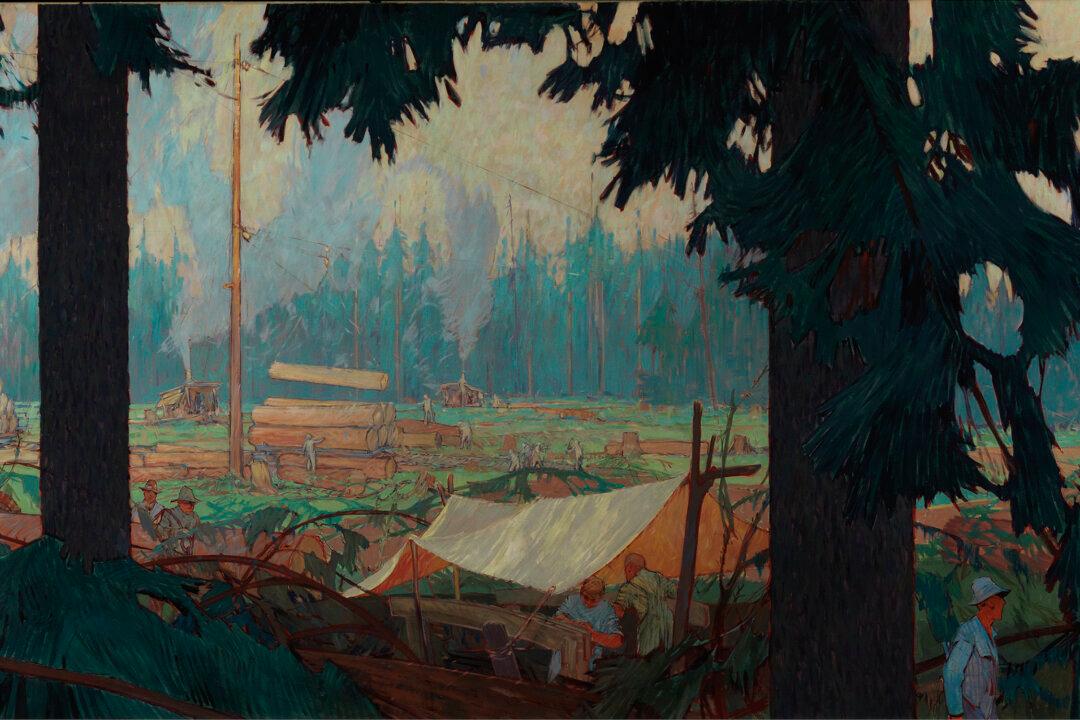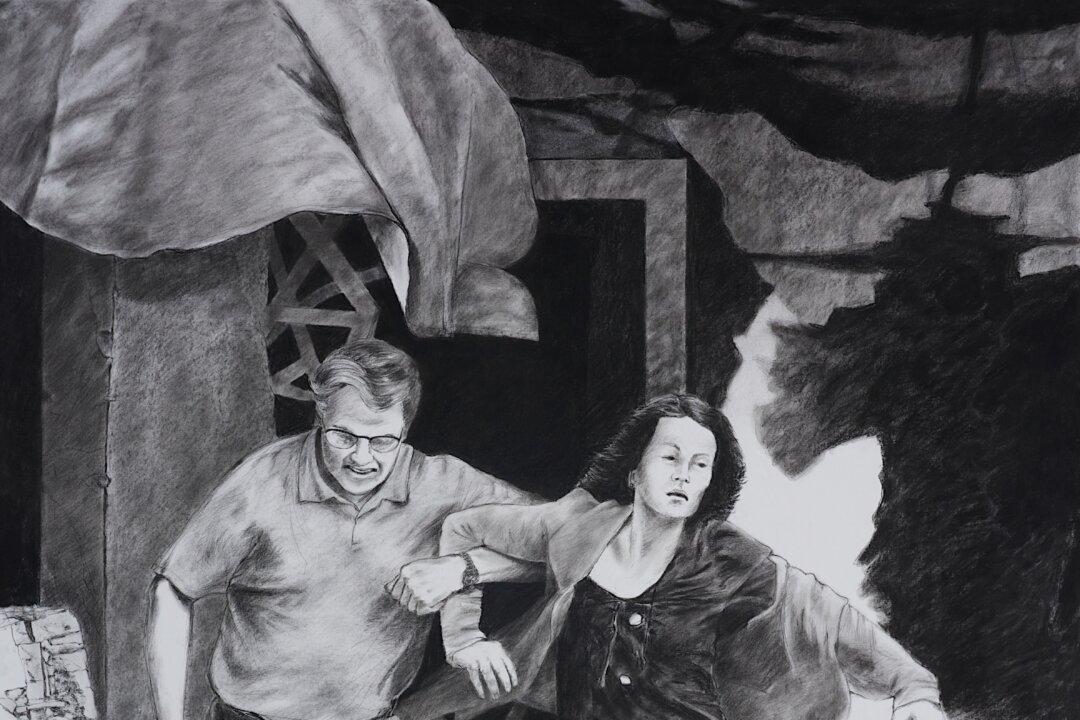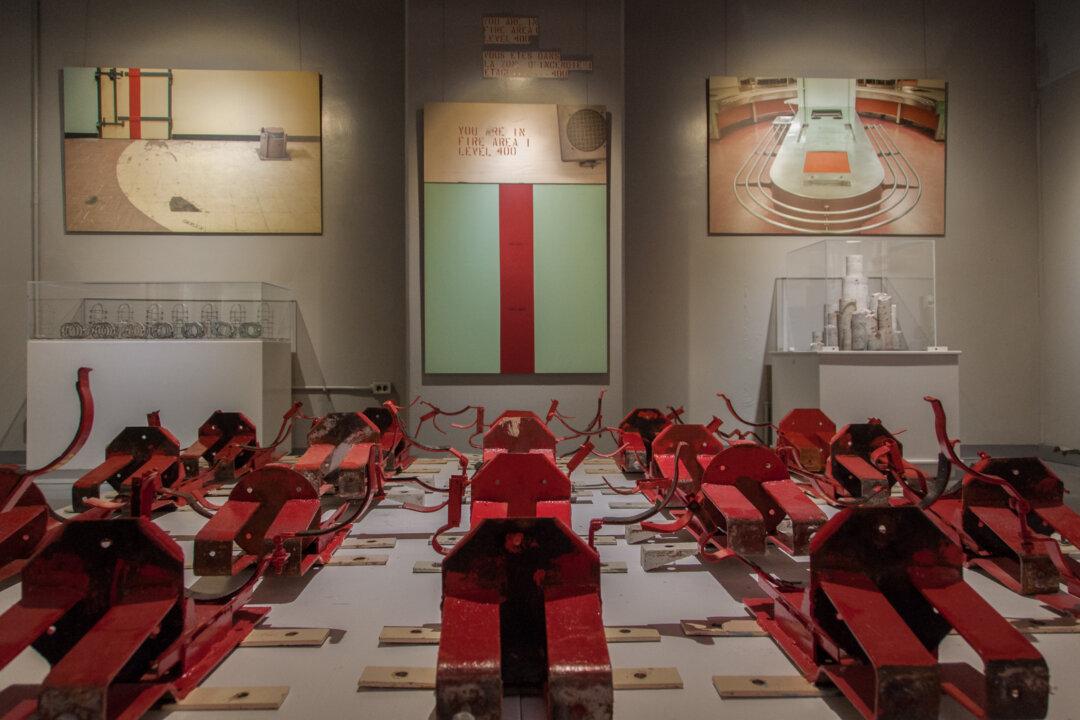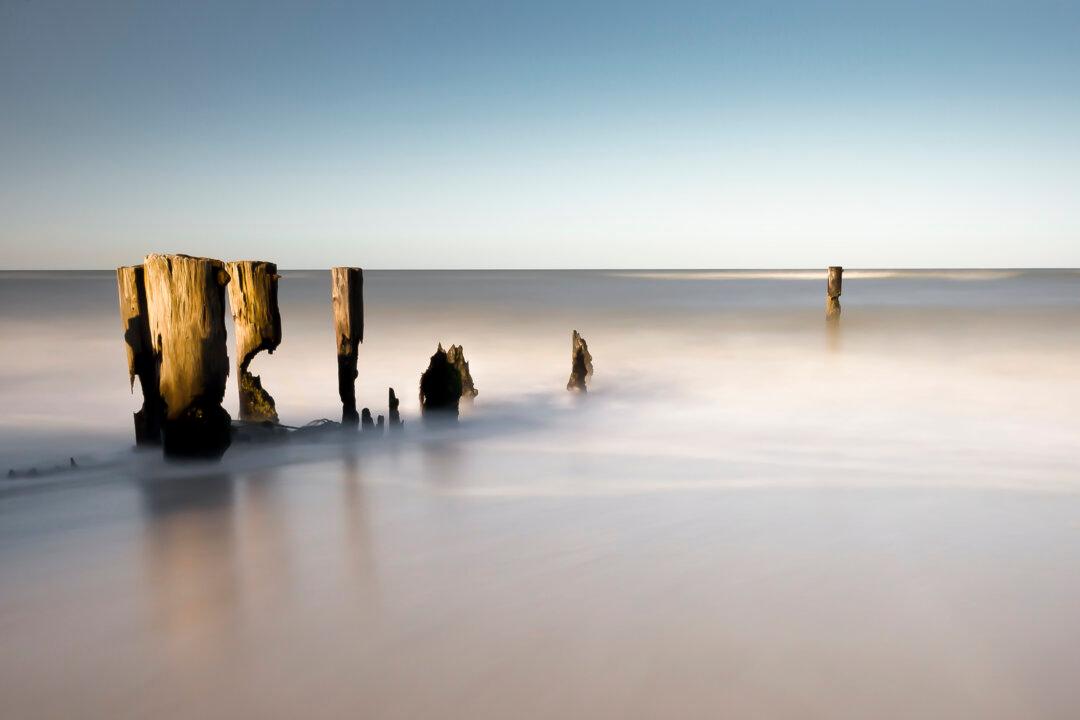In Canada, summer ends with an easy drift of leaves in the wind. Far off in distant lands, however, the wind is carrying the sound of war—noise, confusion, violent death. That was also the case 100 years ago when World War I began.
Two exhibitions at the Canadian War Museum address our received understandings of the Great War. In both, two truths are plain: the losses were greater than we knew, and more than we’ve been told. Moreover, the Great War is not yet finished.
‘Witness: Canadian Art of the First World War’
In this exhibition, the paintings and drawings are all presented as war documents. They are of two sorts: quick studies and sketches done during the war by soldier-artists, and finished paintings and prints commissioned by the Canadian War Memorials Fund during the war or shortly thereafter. The little water colour “A Poppy Field, France,” for example, painted by Vivian Cummings in 1918, is a quick study. The artist was in hospital with trench fever.
The oil painting “Sgt. T.W. Holmes, V.C.” by Ernest Fosbery (1874-1960), on the other hand, is an official portrait commissioned by the War Memorials Fund in 1918 or thereabouts. Sgt. Holmes, the subject of the painting, has just been awarded the Victoria Cross. He is 20 years old.
Tanks were used for the first time in war in the Battle of Flers-Courcelette, France, in 1916. Artist Daniel Sherrin (1869-1940) was there. A year later, while convalescing in a London hospital, Sherrin painted “British Tank in Action,” depicting the frightening images he remembers.
Wartime documentary photography often influenced the artists’ work. In the large landscape “Lumbering Aeroplane Spruce in B.C.” by Charles Simpson (1878-1942), the artist used photography’s high contrasts and sharp differentiations of foreground to set up his composition. The Imperial Munitions Board provided Simpson with photographs for his work.
Artist David Milne (1882-1953) enlisted in the Canadian Expeditionary Forces in 1918. The following year he was sent to France and Belgium to paint war’s aftermath as an official war artist. “Montreal Crater, Vimy Ridge” is a large, stunning water colour presented on two big sheets of white paper. Its small dots of colour take us down deep into the shell of an immense crater. High up on the crater’s edge are two figures, very small, and two small cows. War is over. Where can the farmer pasture his cows?
‘Transformations: A.Y. Jackson and Otto Dix’
The lives of Canadian artist A.Y. Jackson (1882-1974) and German artist Otto Dix (1891-1969) are not only chronologically parallel, but, as curator Laura Brandon insightfully argues in “Transformations,” their work relates the same story—grief, terror, destruction—from opposing sides of battle.
Dix’s “War Scene 1917” is a frightening painting of night sky bombardment depicted in angles of black and grey. “A Copse, Evening” by Jackson is the view from the trench—blasted trees, dead bodies, mud—seen against angled lights in the skies of France.
Two years later, back home in Canada, Jackson paints “First Snow, Algoma.” It, too, is a scene of desolation. The trees are dead, the ground barren. The snow looks like gunpowder. Around the same time in Germany, Dix draws war veterans as armless, legless cripples put out on the streets to beg. His drypoint etching “The Match-Seller” is a brutal indictment of war and those who send young men to war.
Dix enlisted in the German army in 1914, earned the Iron Cross in 1915, and was discharged in 1918. Later termed a “degenerate artist” by the Nazis, he was arrested and charged in 1939 with plotting to assassinate Hitler.
Jackson enlisted in the Canadian Army in 1915. After being wounded in the hip and shoulder in 1916, he was transferred to England and commissioned as a war artist in 1917. He was one of the founding members of the Group of Seven.
The exhibitions, both of which will tour Canada, are accompanied by small, attractively formatted, inexpensive publications with good reproductions of the key paintings. “Witness” was written by curators Amber Lloydlangston and Laura Brandon. Brandon also wrote “Transformations.” Both exhibitions will be on display at the War Museum until Sept. 21.
Maureen Korp, PhD, is an independent scholar, curator, and writer who lives in Ottawa. Author of many publications, she has lectured in Asia, Europe, and North America on the histories of art and religions. Email: [email protected]





